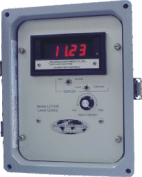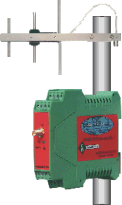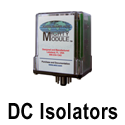Replacing Bubbler Pump Controllers With Up-to-Date Level Monitors
A local City wastewater treatment plant monitors their sewage levels at over 200 lift stations using Duplex and Triplex Bubbler Pump Controllers.
The city lift station supervisors said they were spending extremely too much of their labor time replacing broken parts and retrofitting components on the Bubbler Systems.
Common complaints in using a Bubbler System include failures with the pressure transducers, clogged flow pipes and hoses clogged with materials found in the liquid.
Sensor response time can also lag behind when fluid level changes in the tank. Cold weather and freezing compressed air can also cause the regulator to fail.
Accuracy is dependent on a constant supply of air and may vary by as much as 10% of the full scale due to temperature. Air compressors are the typical source of compressed air. They have to be replaced after a few years. The compressors also use costly electricity.
Our solution was to install a level monitor in conjunction with a submersible pressure transducer.
The LS1000 transducer is a large diaphragm pressure sensor. It has a heavy Stainless Steel structure and sits on the bottom of the lift station tank. The transducer has a built in 2 wire transmitter and has an output of 4mA to 20mA proportional to the fluid pressure at the bottom of the tank.
The LM1000 level monitor can be directly installed into the same housing of most of the pre-existing bubbler systems being replaced. This makes the installation process much easier and faster.
The level monitor comes with a built in level sensor calibrator, bright 4 digit LED display in feet to two decimal places, relay alarm with adjustable set points, built in 24 VDC power supply for the sensor transducer power supply and a 4mA to 20mA output.
After installing the Level Monitor, you can just drop the LS1000-10-40 level transducer into your tank and wire directly to the Level Monitor power supply.
The advantages of using a Submersible Level Sensor are lowering product cost to a third of that of a bubbler system and a faster and easier installation.
All electronics are encapsulated inside the rugged 316 stainless-steel housing.
The transducer is not affected by changes in air temperature or by foam, soap, and other materials in the tank.
It has a constant, fast response time for updating sensor level changes, a 0.5% Span accuracy, and is rugged with a high reliability.
Each Bubbler System can cost in excess of $4,000.00. The city can purchase both a LM1000 Level Monitor and an LS1000 Level Sensor for $1,350.00 (about a third of the cost of (1) Bubbler System).
An upgrade option to the system is remote level monitoring via wireless data transmission. By utilizing a wireless Transmitter and Receiver package, monitoring of the system can be accomplished many miles away, real time.




